When you’re managing a WordPress website, updates can sometimes happen automatically without you even realizing it.
While automatic updates are useful for keeping your site secure and up to date, they can also cause unexpected issues, like plugin conflicts, broken designs, or compatibility problems.
In this post, we’ll discuss what WordPress automatic updates are and why you might want to disable automatic WordPress updates. Then, with the help of code and a simple plugin, we’ll show you how to disable automatic updates.
So without further ado, let’s get started!
Table Of Contents
1 What Are WordPress Automatic Updates?
WordPress automatic updates are a built-in feature that lets your site automatically check for and install the latest updates.
By default, WordPress will update its core software to fix security issues, and in some cases, it may also update plugins or themes if a major vulnerability is found.
The idea is simple: automatic updates save you time and help keep your site secure without you needing to log in and apply them manually. However, relying on automation means you lose some control. For example, an automatic update could cause compatibility issues, and you wouldn’t know until something breaks.
When you install updates manually, you get the benefit of deciding when and how they’re applied, and you’re there to troubleshoot if anything goes wrong. That’s why some site owners prefer to turn automatic updates off, while others leave them on for convenience.
There’s no one-size-fits-all answer; it depends on how much control you want and how comfortable you are with potential risks.
2 Why Disable Automatic WordPress Updates?
If you want more control over your website and reduce the risk of unexpected issues, here’s why you can consider disabling automatic WordPress updates:
- Risk of site crashes: Automatic updates can sometimes cause your site to crash, usually due to conflicts between plugins, themes, or custom code. Having a recent backup ensures you can restore your site quickly if this happens.
- Unwanted feature changes: Updates may add features or settings you don’t need, disrupting your site’s design or workflow. Fixing everything afterwards to match your vision can be time-consuming.
- Loss of control: With automatic updates, you don’t choose when or how updates are applied. If an update causes issues, you may need to contact the developer or test updates on a staging site before applying them to your live site.
- Better management with manual updates: Disabling automatic updates lets you decide when to update your WordPress core, themes, and plugins, giving you more control and fewer unexpected surprises.
3 How to Disable Automatic Updates in WordPress
You can disable automatic updates manually or with the help of a plugin. So, without further ado, let’s get started.
Note: You should always back up your website, regardless of how you update it (manually, automatically, or using a plugin). Refer to our dedicated tutorial on backing up the WordPress site.
3.1 Disable Automatic Updates Using a Plugin
There are a variety of WordPress plugins that can assist you in handling updates, but we will use the Easy Updates Manager plugin.
At first, install and activate the plugin from the Plugins → Add Plugin section of the WordPress dashboard. Refer to our dedicated tutorial to install and activate the plugin in WordPress.

Once the plugin is activated, navigate to Dashboard → Updates options to configure the settings.
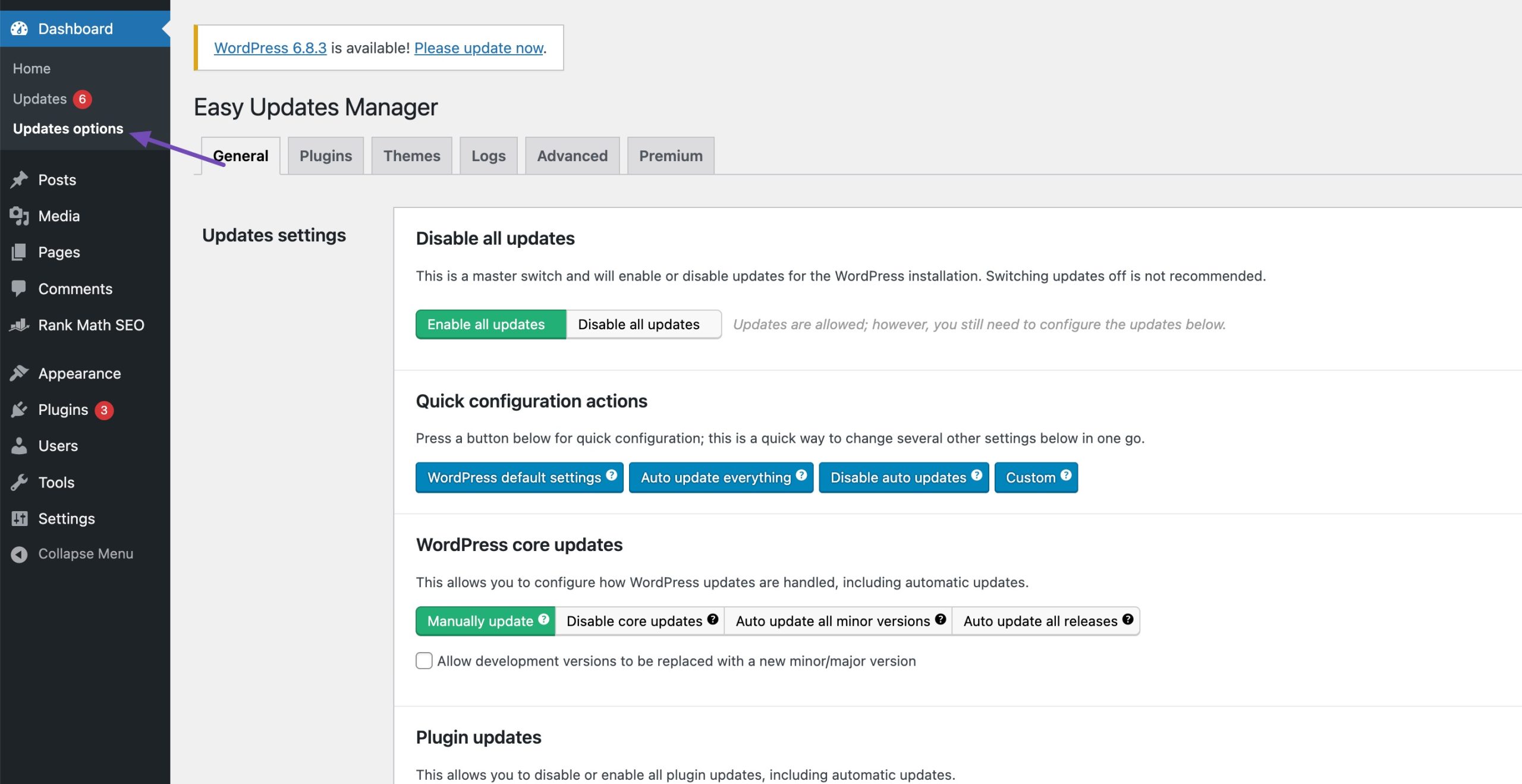
The Easy Updates Manager settings page will pop and if you want to turn off all updates, toggle the Disable all updates option as shown below.
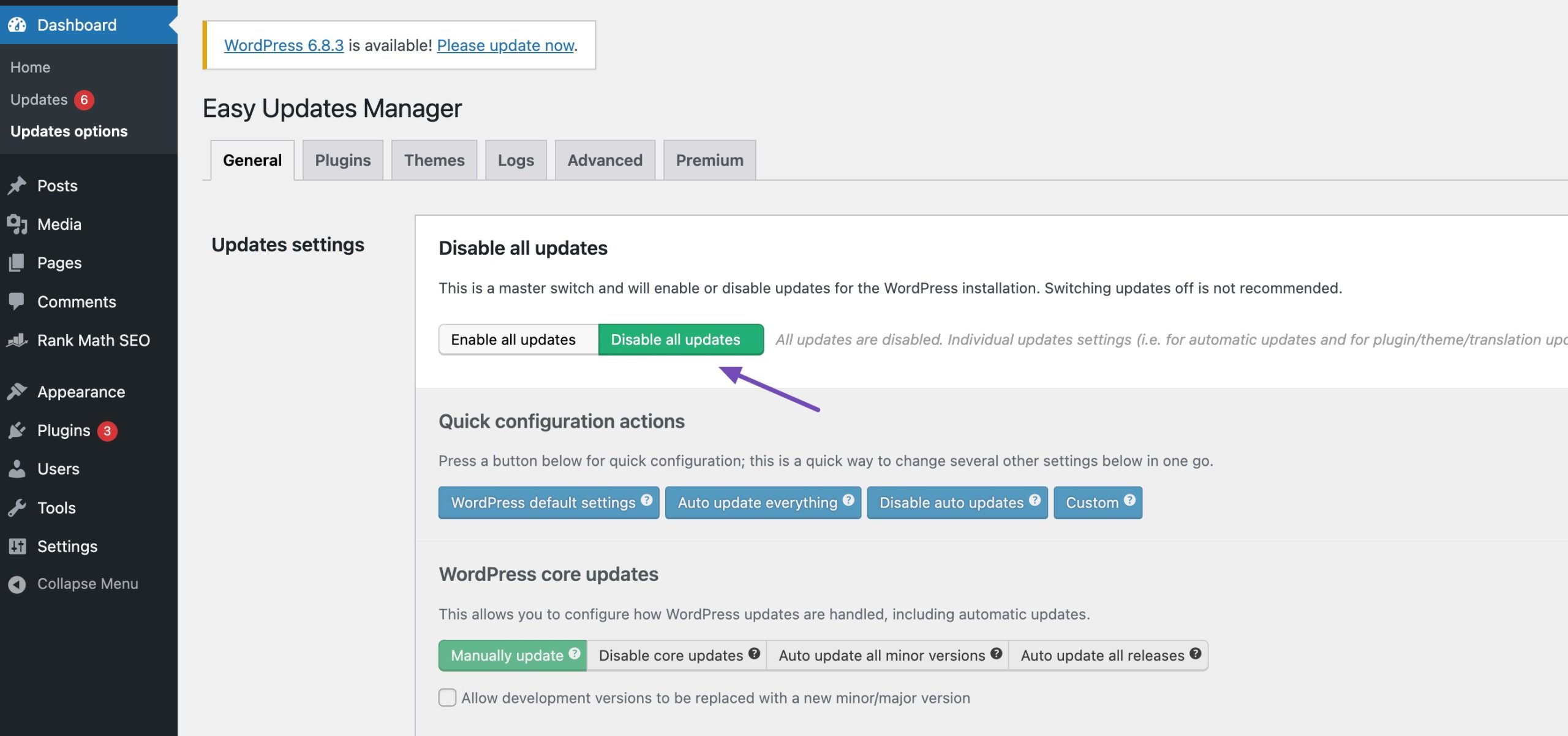
However, disabling all updates will prevent update notifications from appearing. Instead, you can choose your preferred settings. You can disable plugin and theme auto-updates while enabling the core WordPress auto-updates.
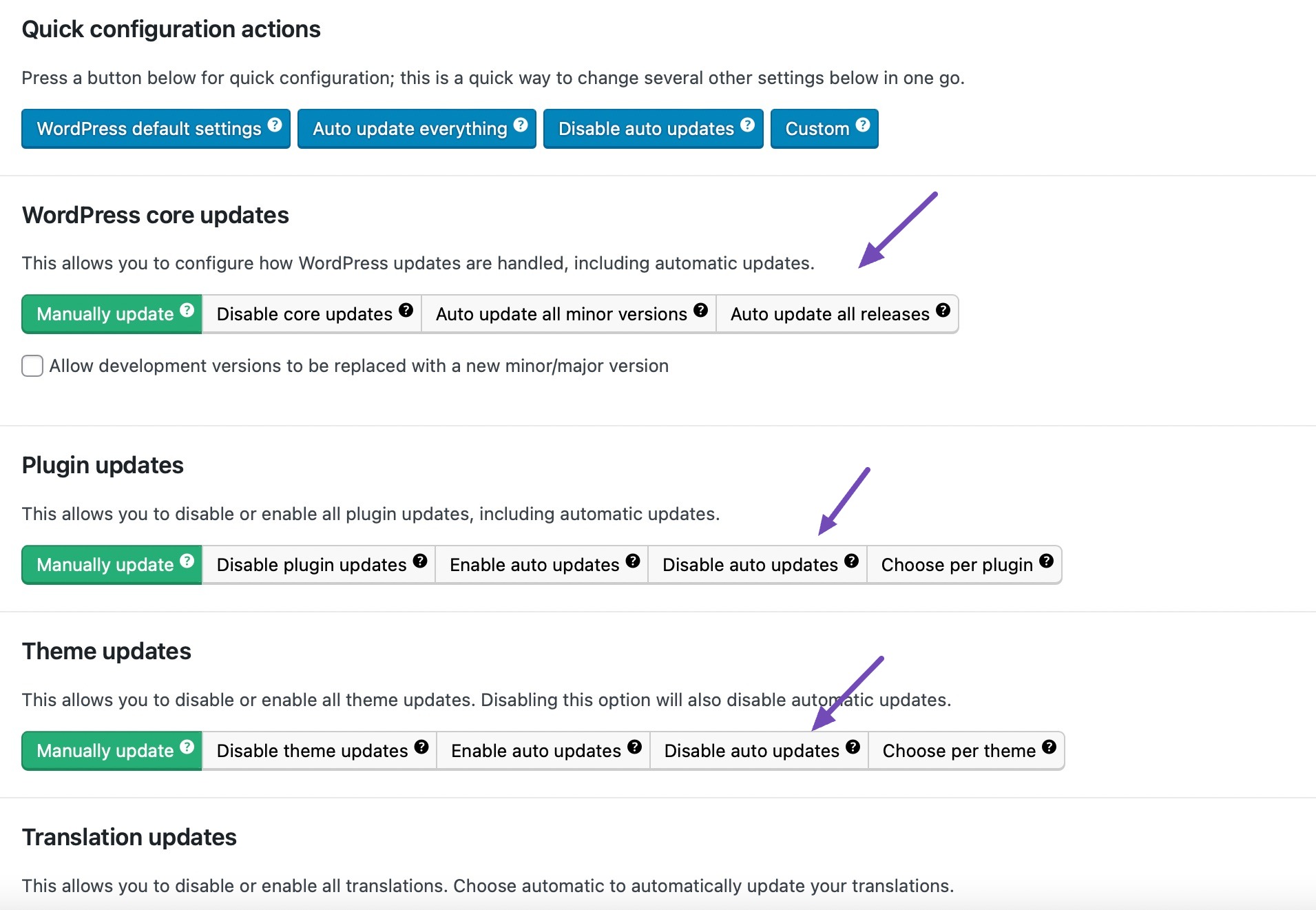
3.2 Disable Automatic Updates Without Using a Plugin
To disable the automatic updates, add the following code snippet to the wp-config.php file.
define( 'WP_AUTO_UPDATE_CORE', false );To access the file, you can use File Transfer Protocol (FTP) or the File Manager in your web host’s cPanel. You can look for the file in the public_html folder. Open the file and add the code snippet towards the end, right above the line that says /* That’s all, stop editing! Happy publishing. */ as shown below.
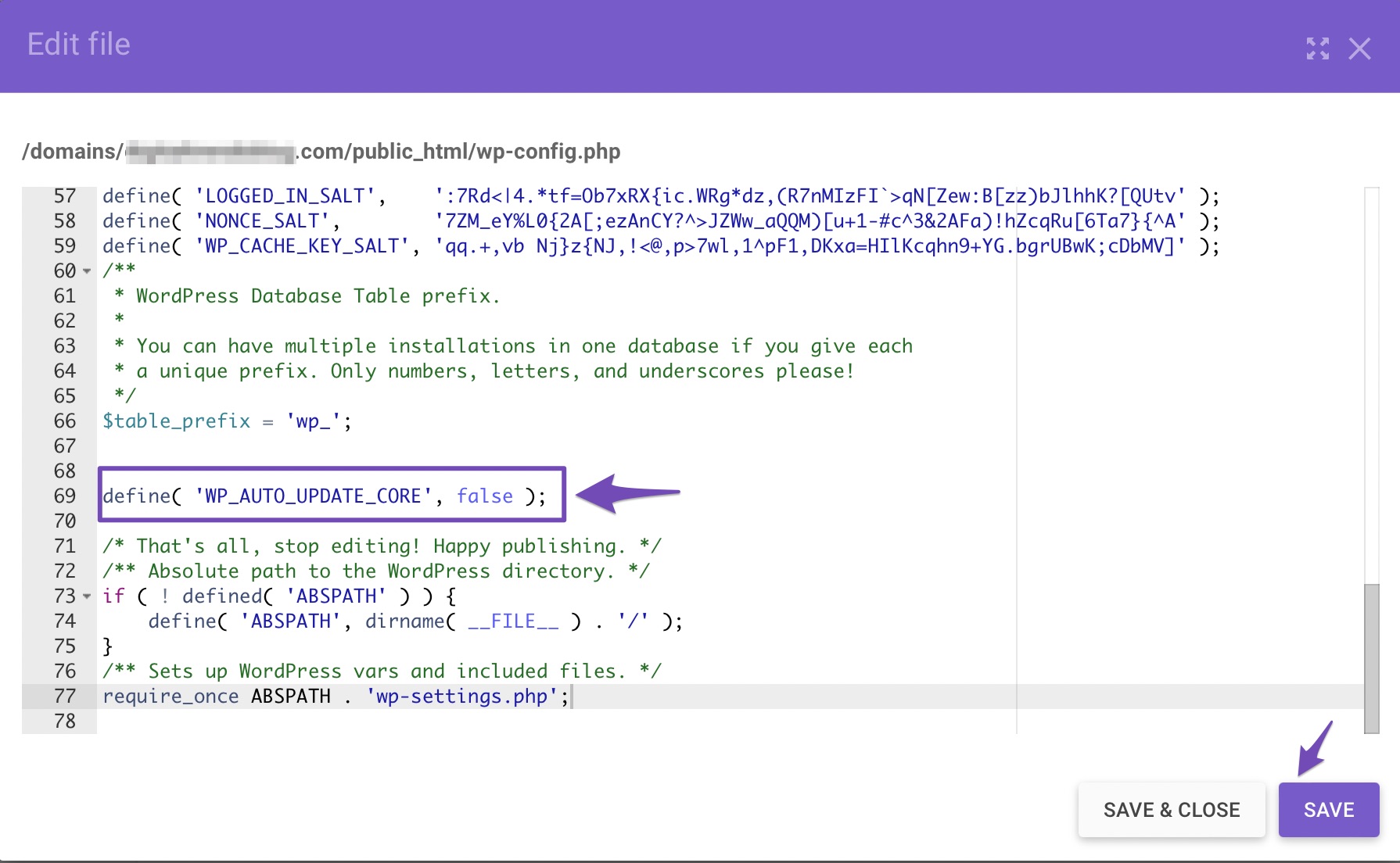
WordPress will no longer automatically install updates. However, this only pertains to the core installation. If you wish to disable updates for plugins and themes, you can do so by adding the following filters to your theme’s functions.php file. You can consider using a child theme and then add the code.
To access the functions.php file, navigate to Appearance → Theme File Editor from your WordPress dashboard. Open the functions.php file from the list on the right. To disable automatic plugin updates, add the following code to the bottom of the file.
add_filter( 'auto_update_plugin', '__return_false' );To disable automatic updates for themes, add the following code.
add_filter( 'auto_update_theme', '__return_false' );If you want to disable automatic updates to both your theme and any plugins, add both lines, as shown below.
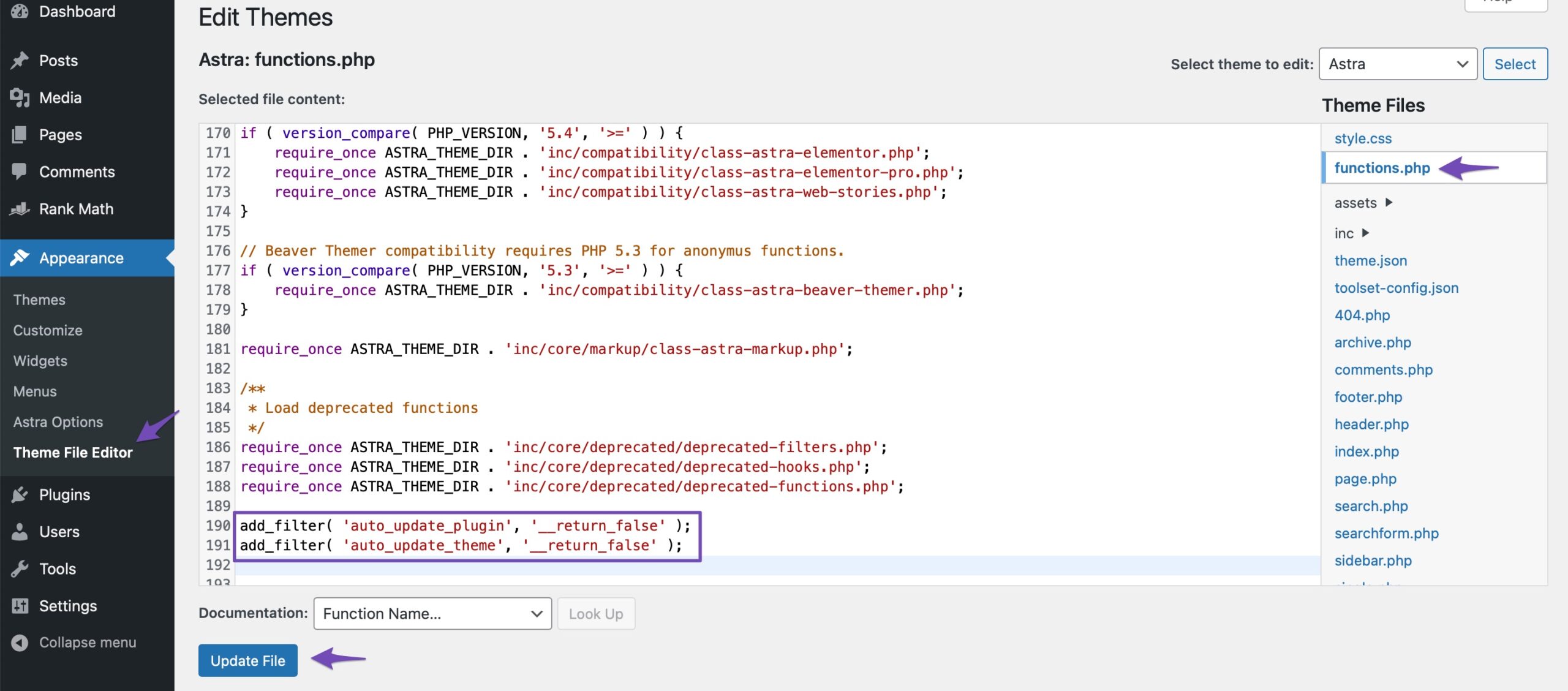
Automatic updates for WordPress core, themes, and plugins will now be disabled. You can mix and match these in any sequence to create a solution that suits your needs.
3.3 Disable Automatic Updates for Specific Plugins and Themes
WordPress allows you to disable automatic updates for plugins and themes.
To disable automatic updates for a specific plugin, navigate to Plugins → Installed Plugins from your WordPress dashboard. Click on Disable auto-updates option for the specific plugin, as shown below.

To disable automatic updates for a specific theme, navigate to Appearance → Theme settings from your WordPress dashboard. Click on Disable auto-updates option for the specific theme, as shown below.
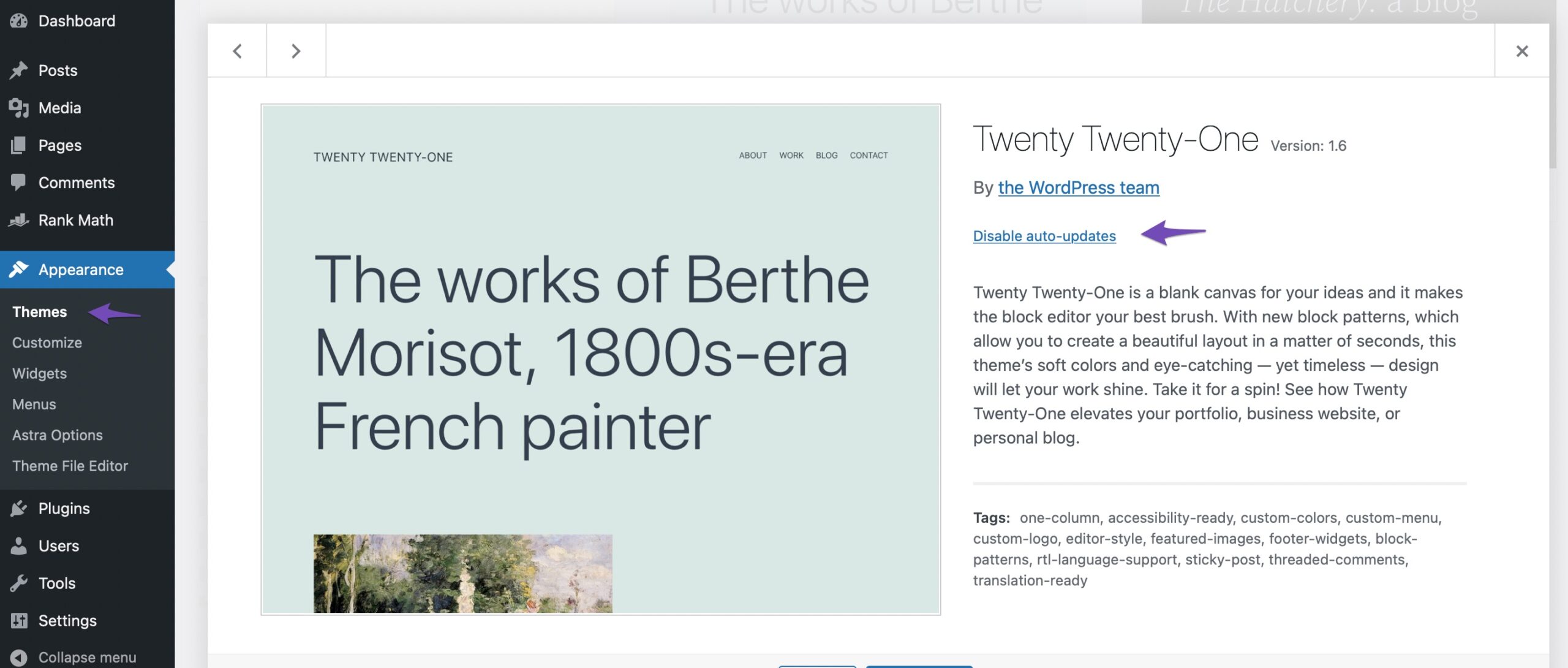
Automatic updates for specific themes and plugins will now be disabled.
4 Conclusion
WordPress is a well-maintained platform that improves with each update, fixing bugs, patching security issues, and adding new features. These updates make it easier for you to keep your site secure and running smoothly.
At the same time, some updates can cause issues on your site. By disabling automatic updates, you gain more control and can test plugins or themes before applying changes, ensuring compatibility and minimizing downtime.
No matter which approach you choose, regular backups are essential to protect your website. Keeping your site updated safely ensures it remains secure, stable, and performing at its best.
Whether you use automatic or manual updates, keeping your site backed up regularly is important. If you like this post, let us know by tweeting @rankmathseo. 💬
